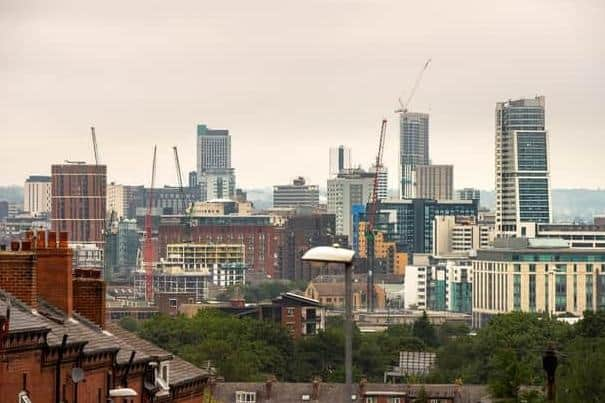Leeds and Sheffield have areas where air pollution levels are twice the level World Health Organisation recommends, say Friends of the Earth
Using the latest official government data, FOTE calculated the average annual air pollution levels for two of the most serious types of air pollution - Nitrogen Dioxide (NO2) and Particulates (PM2.5) - for every neighbourhood in England, each with an average population of 1,700.
The analysis showed that 20 neighbourhoods in Leeds and two in Sheffield suffer the worst pollution levels.
Advertisement
Hide AdAdvertisement
Hide AdExamples of highly polluted areas, as shown on a map provided by FOTE, include parts of Beeston in Leeds and Attercliffe in Sheffield.


FOTE’s Yorkshire and Humberside campaign organiser, Simon Bowens, said: “It’s a scandal that people in parts of Leeds and Sheffield live in areas where average air pollution levels are twice World Health Organisation guidelines for either or both of two of the deadliest pollutants.
“Millions of people across the country are suffering the effects of living in the most polluted neighbourhoods – with the most deprived communities and people of colour the hardest hit.
“The new Prime Minister must get to grips with this public health emergency, which kills tens of thousands of people prematurely every year, and costs the economy billions of pounds annually, with a package of measures to clean up our air, including cutting car use.”
Advertisement
Hide AdAdvertisement
Hide AdThe study also found that there are 2,546 neighbourhoods in England where average air pollution levels are double WHO guidelines.
More than a million children under 18 live in high pollution neighbourhoods, which also contain 1,737 schools, FOTE found.
People of colour are three times more likely to live in these high air pollution neighbourhoods and half of these neighbourhoods are among the most deprived in England, according to the analysis.
But those living in these areas are also three times less likely to own a car than people living elsewhere, suggesting they are contributing the least to poor air quality.
Advertisement
Hide AdAdvertisement
Hide AdFOTE is calling for tougher action on air pollution, including:
- Greater incentives to encourage people to leave their cars at home, including better and cheaper public transport, and safer cycling and walking infrastructure, and a halt to all new major roadbuilding.
- Faster roll-out of electric vehicle infrastructure, such as charging points, and a scrappage scheme to encourage people to switch to cleaner cars and other ways to get around.
- More Clean Air Zones that restrict the dirtiest vehicles in our cities
Advertisement
Hide AdAdvertisement
Hide Ad- Action on all sources of key pollutants to ensure current UK legal limits are met in the shortest time possible. The government target for cutting PM2.5 by 2040 must be improved, FOTE says, as it “is based on WHO guidelines that have subsequently been strengthened”.
- FOTE is calling on the government to meet its current target 10 years earlier (by 2030) as a stepping stone for complying with new and tougher WHO guidelines as soon as possible.
A Department for Environment, Food and Rural Affairs spokesperson said: “Local authorities across Yorkshire and Humberside are taking action to reduce air pollution, and with government support are introducing clean air zones and upgrading their vehicle fleets.
“Air pollution at a national level continues to reduce significantly, although we recognise we need to go further. We have committed nearly £900 million to tackle air pollution and improve public health, and recently consulted on stretching new targets for air quality to be set through the Environment Act.”
To see a map of high pollution areas, visit: https://mapst.ac/foe/air-pollution#6.17/53/-2.75